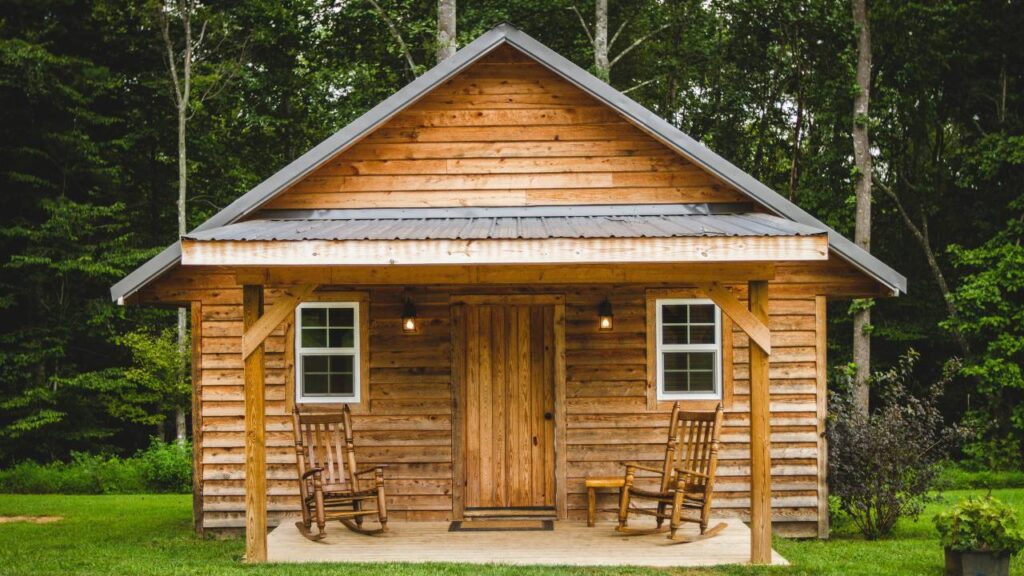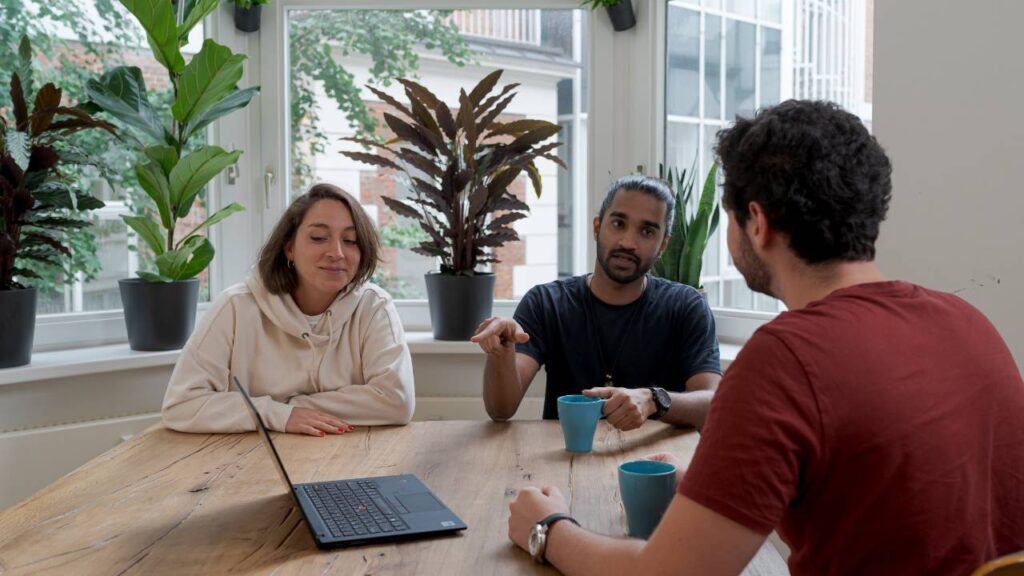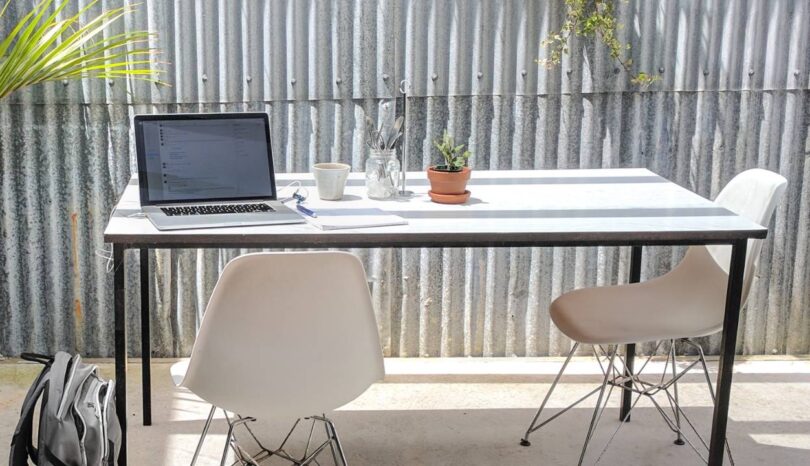Revolutionising the Traditional Office: Embrace the Outdoors
The traditional office is undergoing a major transformation as organisations recognise the potential benefits of incorporating nature and outdoor elements into workplace designs. This shift has been driven by a growing appreciation for the biophilia hypothesis, which suggests that humans have an innate desire to connect with the natural world.
By embracing this concept, companies aim to create work environments that not only foster productivity but also enhance the well-being of their employees.
The Shift from Traditional Offices
The transformation of the traditional office environment has been gradually taking place in recent years. This shift is driven by an increasing focus on employee well-being, collaboration, and flexibility in the workplace. As a result, new office designs and models are emerging that encourage employees to embrace the outdoors.
One of the most noticeable changes in the office landscape is the incorporation of natural elements into the physical space. This can include the addition of greenery, such as plants and living walls, as well as the inclusion of natural materials, such as wood and stone. Natural light is also a crucial factor, with modern office buildings designed to allow for maximum sunlight exposure while reducing the reliance on artificial lighting.
Moreover, the concept of the traditional office set-up, with its rigid desk layouts and closed-off spaces, is being replaced by more open and collaborative workspaces. These environments encourage interaction, impromptu meetings, and dynamic team working by providing adequate room to move and collaborate both indoors and outdoors. Outdoor spaces, such as patios, gardens, and rooftop terraces are becoming more popular features in modern office design, offering employees the opportunity to work in fresh air and enjoy natural surroundings.
Flexible working arrangements are also driving the evolution away from the traditional office. Remote and hybrid work setups are becoming more commonplace, giving employees the freedom to choose when and where they work. This fosters a greater work-life balance and allows employees to take advantage of outdoor spaces for rest and rejuvenation. With the right tools and environment, employees can thrive while working from home, ultimately contributing to an increase in their overall well-being and productivity.
Embracing Outdoor Workspaces

In recent years, there has been a growing trend towards incorporating nature into office spaces. This approach not only improves the aesthetics of the workplace but also enhances employees’ well-being and productivity. Outdoor workspaces can be designed in various ways, such as including greenery, rooftops, and living walls, or even using innovative pods for individual work or meetings.
One popular way to integrate nature into the workspace is through the construction of outdoor rooms – dedicated spaces that combine the functionality of an office with the benefits of being outside. For those seeking a more permanent and personal workspace solution, building a log cabin in your garden can offer a secluded, nature-infused environment that can serve as an inspiring office or a peaceful retreat. These rooms or cabins can feature comfortable seating arrangements surrounded by plant life, offering employees a unique place to work, collaborate, or take a break.
Rooftops are another great opportunity for integrating outdoor workspaces into a traditional office setting. By converting unused rooftop areas into green spaces, employers offer workers a refreshing environment to work or unwind. Rooftop gardens provide natural shading, reduce heat island effect, and improve air quality, positively impacting employee well-being.
Living walls are vertical gardens that bring the outdoors inside the office building. They can dramatically transform mundane office walls into lush, green features, improving air quality and promoting a calming atmosphere. Living walls can be scaled depending on the available space, making them an excellent option for offices with limited room for outdoor workspaces.
Finally, the use of pods, or small individual workspaces, is another way to facilitate outdoor working. These structures are usually isolated, allowing employees to focus on their work without distractions. Pods can be equipped with modern technology and ergonomic furnishings, ensuring a comfortable working environment.
Innovative Office Furniture
As the modern workforce continues to evolve, so too does the need for innovative office furniture that caters to the demands of the tech-savvy generation. These new designs focus on creating selections that integrate cutting-edge technology, ergonomic designs, and flexible layouts to promote collaboration and well-being in the workplace.
One of the most significant innovations in office furniture is the integration of ergonomic features into desks and chairs. Ergonomic designs such as height-adjustable desks, chairs with lumbar support, and flexible seating options allow employees to work comfortably and switch between standing and sitting to promote better posture and overall well-being. From improved posture to reduced risk of injury, these designs have the potential to enhance productivity and workplace satisfaction significantly.
Furthermore, technology has brought forth a transformation in workstations, blurring the lines between traditional and contemporary styles. Futuristic workstations are now redefining the traditional office landscape by seamlessly integrating essential technology and providing employees with ergonomic setups. These transitions have proven vital in optimising office spaces for both individual and collaborative work scenarios.
An additional aspect of innovative office furniture is the rise of modular pieces. These flexible and multi-functional modules can be easily customised and rearranged to meet the ever-changing demands of organisations. Modular office furniture offers increased adaptability and versatility, allowing employees to create their ideal work environment.
Following the trend to optimise space usage while fostering collaboration, many companies nowadays are opting to replace traditional cubicles. Instead, they choose more open and fluid layouts that encourage communication among colleagues and contribute to a more inclusive atmosphere. These flexible environments often comprise bench desking and collaborative seating arrangements that promote informal meetings and teamwork.
The Role of Technology

Technology plays a significant role in revolutionising the traditional office by embracing the outdoors. As more organisations shift towards hybrid working models, the need for seamless connectivity and efficient communication becomes crucial. In this era, employees can work from various locations, including outdoor spaces that offer a refreshing environment and increased productivity.
One of the factors that have enabled this transformation is the availability of high-speed internet connections and advancements in wireless technology. This allows employees to access business applications, collaborate with colleagues, and participate in video calls efficiently, even when they are working outside.
Moreover, the integration of smart devices, such as laptops, smartphones and tablets, ensures that employees can work effectively, regardless of their location. These devices support numerous applications, which permit multitasking, file sharing, and real-time communication with team members.
Indeed, technology has fostered innovation in the way offices are designed. For instance, companies are now building outdoor workspaces that incorporate greenery, comfortable seating, and sheltered areas to create an optimum work environment. Such spaces encourage employees to engage with nature, which can have a positive impact on their well-being and productivity.
Supporting Wellness and Productivity
Embracing the outdoors in office design can significantly contribute to employee well-being and increased productivity. Integrating natural elements into the workspace not only adds aesthetic value but also creates a positive impact on employee health and focus.
Incorporating green spaces, such as gardens or rooftop terraces, allows employees to enjoy fresh air, natural sunlight, and a change of scenery. These elements provide a welcome break from the traditional office setting, helping to reduce stress and burnout. For instance, exposure to natural light has been shown to improve both mood and cognitive functions, thus boosting overall efficiency.
Investing in ergonomic outdoor furniture can also promote employee well-being. By providing comfortable seating options and workstations, companies show their commitment to the physical health of their employees. This, in turn, can lead to reduced fatigue, fewer work-related injuries, and increased productivity.
Using biophilic design in the workplace, which combines indoor and outdoor spaces seamlessly, can foster a sense of connectivity to nature. Incorporating natural materials like wood and stone, as well as elements like water features and living walls, can contribute to creating a calm and inspiring environment. This atmosphere not only supports mental well-being but also enhances focus and creativity.
Modern Workplace Policies

The modern workplace has undergone significant transformation, driven by advances in technology and the need to adapt to the ever-changing landscape of employee preferences. Embracing the outdoors is one approach that organisations are adopting to revolutionise traditional office environments.
Startups, in particular, recognise the importance of adopting contemporary workplace policies to attract and retain top talent. Integrating outdoor spaces into the office can contribute to employee satisfaction by providing a more relaxed and flexible environment for workers.
One major policy change that organisations can implement is offering employees the choice to work outdoors whenever possible. By providing well-equipped workstations in terrace gardens, balconies, or outdoor seating areas, employees can benefit from exposure to natural light, fresh air, and greenery. Studies have shown that working in such environments can boost productivity, enhance creativity, and promote overall well-being.
In addition to providing outdoor workspaces, companies should encourage employees to take regular breaks and incorporate physical activity into their routines. Organising walking meetings and scheduling outdoor team-building activities can foster collaboration and help employees connect with their colleagues in informal settings.
Another crucial aspect of modern workplace policies is flexibility. By allowing employees to choose their preferred work environment, including outdoor spaces, companies can cater to individual preferences and foster a sense of autonomy. This flexibility can manifest through hybrid work policies that feature a mix of in-office, remote, and outdoor workplaces.
To ensure the successful implementation of these policies, organisations must invest in ergonomic furniture and technology that can withstand outdoor conditions. This may involve researching suitable materials, purchasing weather-resistant devices, and providing shade structures to protect from the elements.
Visions for the Future of Work
The future of work is transforming as organisations rethink their approach to traditional office spaces. Embracing the outdoors, focusing on employee well-being, and implementing innovative concepts are becoming core aspects of the office of the future.
In response to the rise of remote work and work-from-home trends, many companies have recognised the need to adapt their workspaces and offer more flexibility. One approach is integrating nature into the office environment and creating spaces that allow employees to work under the open sky, enjoy greenery, and be closer to nature. This not only fosters creativity but also offers a chance to escape the confines of traditional cubicles and enclosed rooms.
By blending indoor and outdoor spaces and encouraging employees to work in open areas with fresh air, organisations can improve physical and mental well-being. Incorporating elements like rooftop gardens, terraces, and green courtyards can offer a refreshing change of scenery and reduce stress levels. Access to natural light and ventilation also contributes to a healthier and more efficient work environment.
In addition to incorporating the outdoors into office design, the future of work also involves continued support for work-from-home arrangements. Offering employees the option to choose their work location according to their needs promotes a healthier work-life balance and increases overall productivity. The office of the future is likely to become a hub for collaboration and social interactions while providing spaces for focused, independent work when needed.
Utilising technology to enhance collaboration between on-site and remote employees will also be crucial in the transition towards the office of the future. Video conferencing tools, chat platforms, and project management systems can streamline communication, fostering a sense of shared purpose and team spirit among distributed teams.
Conclusion
The evolution of the traditional office setting to incorporate nature’s tranquillity showcases a forward-thinking approach to workplace design and culture. By blending the boundaries between indoor and outdoor spaces, businesses are not just redefining the physical workspace, but also reshaping employee well-being, collaboration, and overall productivity.
As we navigate the future of work, it’s evident that a harmonious merger of nature, flexibility, and technology will be at the heart of thriving work environments. Embracing these trends today positions businesses at the forefront of workplace innovation, ready to harness the full potential of their workforce in a rapidly changing landscape.
